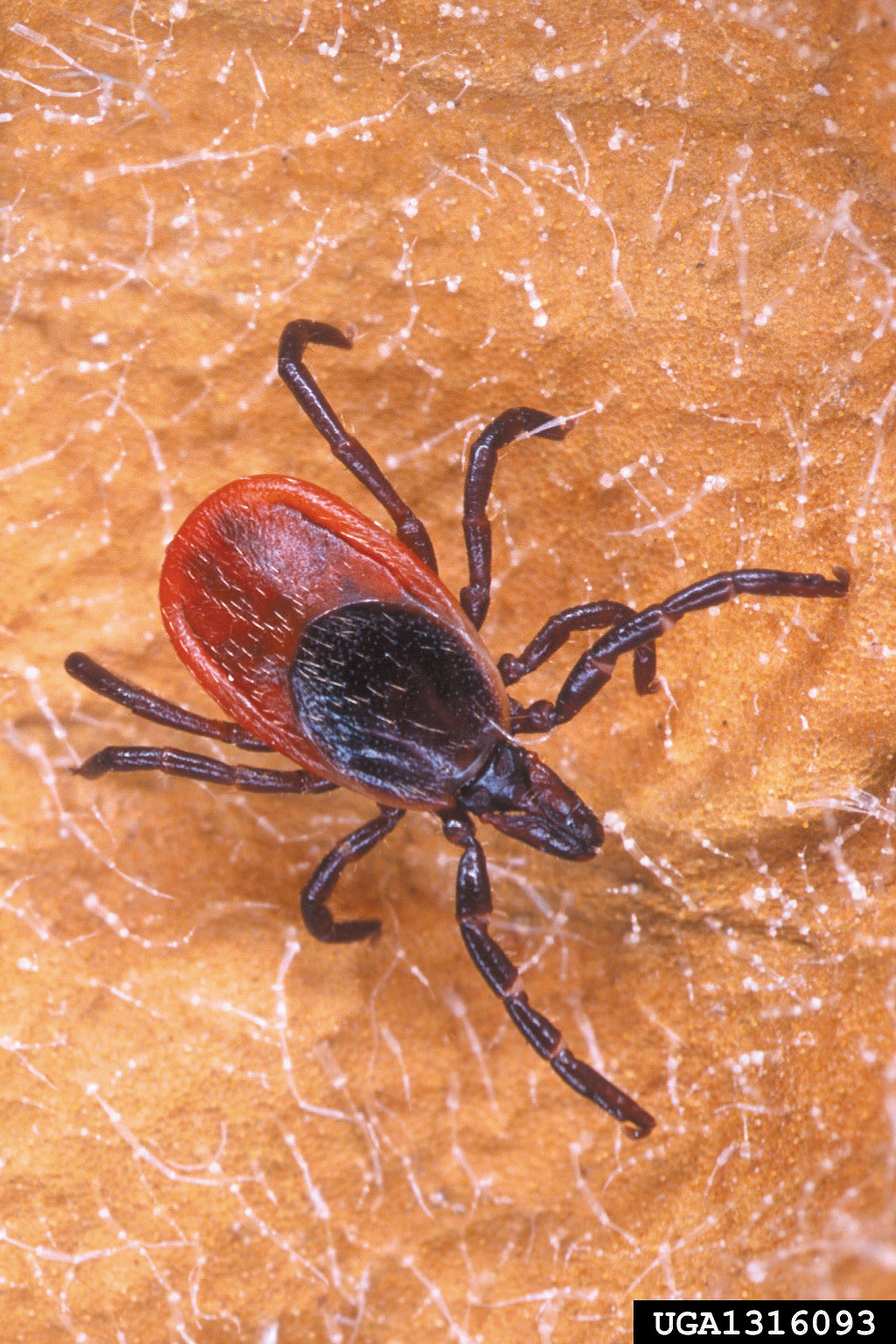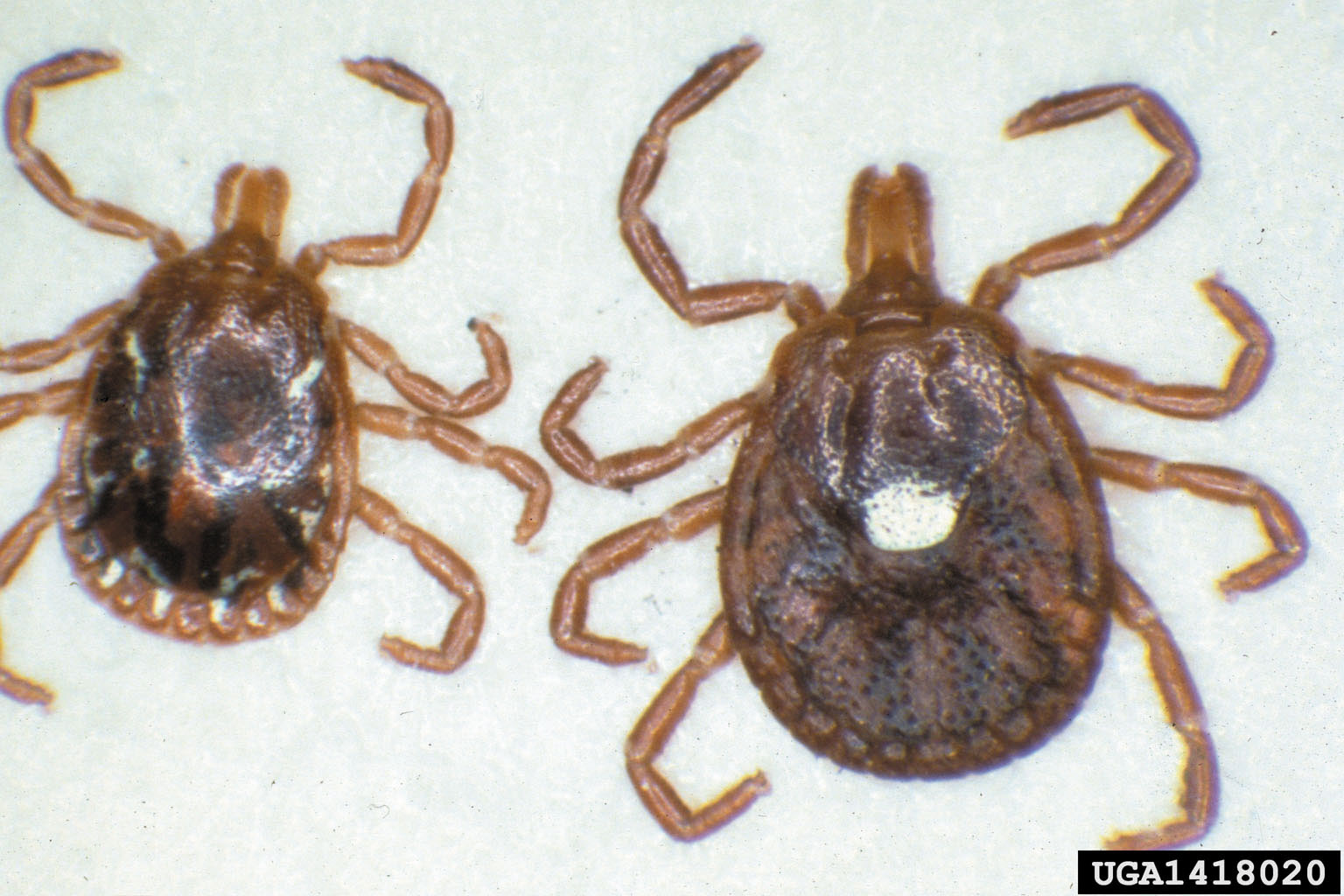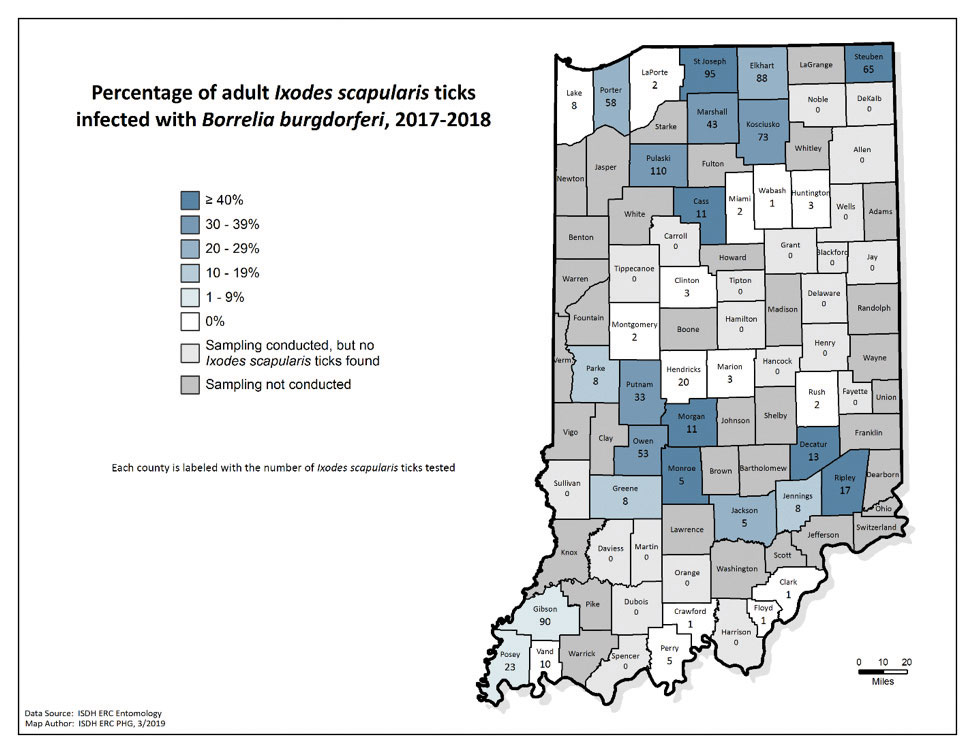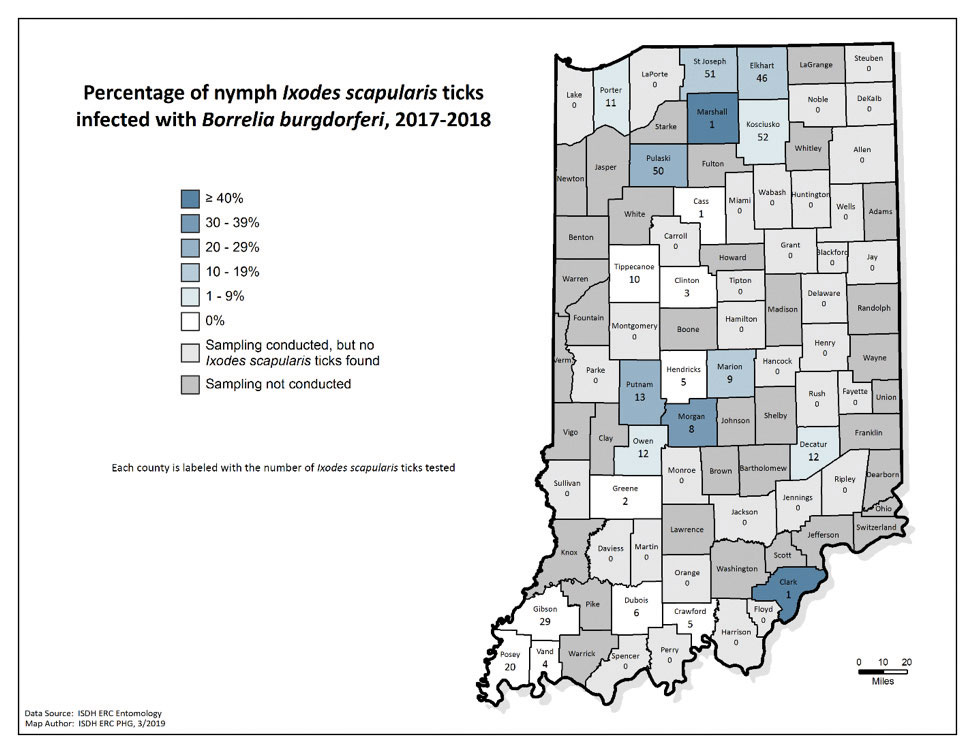Tick-Borne Diseases of Indiana
 Blacklegged tick: Scott Bauer, USDA Agricultural Research Service, Bugwood.orgAs spring approaches and we begin to enjoy the outdoors, we’ll soon find that ticks have joined the party. Not only are ticks a nuisance, but they can also transmit disease. Therefore, it’s important to take precautions to avoid tick bites and the potential diseases they may carry, as tick-borne diseases are on the rise.
Blacklegged tick: Scott Bauer, USDA Agricultural Research Service, Bugwood.orgAs spring approaches and we begin to enjoy the outdoors, we’ll soon find that ticks have joined the party. Not only are ticks a nuisance, but they can also transmit disease. Therefore, it’s important to take precautions to avoid tick bites and the potential diseases they may carry, as tick-borne diseases are on the rise.
There are three ticks that people are likely to encounter in Indiana: Ixodes scapularis, the blacklegged tick; Dermacentor variabilis, the American dog tick; and Amblyomma americanum, the lone star tick. Each tick is most abundant in different parts of the state, and each one carries a different set of diseases.
These ticks have four life stages: egg, larva, nymph, and adult. All three tick species are 3-host ticks, which means that each life stage feeds on a different vertebrate host. When a tick is looking for a meal, it will climb onto vegetation and wait for a potential host to walk by; this process is called questing. Ticks detect a potential host by sensing carbon dioxide, heat, vibration, and other cues.
The blacklegged tick has been reported in 83 counties in Indiana, with the highest abundance in northern Indiana. The main threat from blacklegged ticks in Indiana is Lyme disease, caused by the bacterium Borrelia burgdorferi. Both adult ticks and nymphs can transmit B. burgdorferi to humans, but nymphs are the primary vector due to their small size, and are most active from May to July. Adult blacklegged ticks are active beginning in fall and can even be active on warm days throughout the winter and into spring. Larvae feed on small rodents, which are the wildlife reservoir for Lyme disease. Blacklegged ticks are most likely found in dense wooded areas that hold moisture around the ground level, because these smaller ticks are more vulnerable to drying out. There were 153 human cases of Lyme disease in IN in 2018, with most cases occurring in the northwest part of the state. Blacklegged ticks can also transmit babesiosis and anaplasmosis, which are rare in Indiana, and Powassan virus, which has not yet been detected in Indiana. Dog tick: Susan Ellis, USDA APHIS PPQ, Bugwood.org
Dog tick: Susan Ellis, USDA APHIS PPQ, Bugwood.org
The American dog tick is found throughout the state and is capable of transmitting a group of diseases called the spotted fever rickettsioses (SFRs), with the most famous being Rocky Mountain spotted fever. The dog tick is a large, hearty tick commonly found in tall grass and brush. The immature stages can pick up RMSF from small rodents, but only adult dog ticks feed on humans. Therefore, only adult ticks can transmit the disease to humans. In Indiana there were 79 human cases of SFR in 2018 and 94 in 2017, which were large increases from previous years. Tularemia, a bacterial infection associated with rabbits, can be transmitted by the American Dog tick and the lone star tick, but is rarely reported in Indiana.
The lone star tick can be found in various areas throughout the state, but is found in higher abundance in the southernmost third of the state. All three life stages will feed on humans, and people often refer to immature stages as “turkey ticks or turkey mites.” Lone star ticks can transmit ehrlichiosis, a bacterial infection for which white-tailed deer are the reservoir. Both nymphs and adults play a role in transmission. There was a large increase in human ehrlichiosis cases in Indiana during 2018, with 74 cases compared to a previous high of 49 in 2014.
Most of the tick-borne diseases above present with flu-like symptoms, such as fever, muscle aches, and possibly a rash. A characteristic symptom in Lyme disease is an erythema migrans rash (commonly called a bulls-eye rash), but not all people will have this symptom. Most of the tick-borne diseases common in Indiana are easily treated with antibiotics; however, Rocky Mountain spotted fever and ehrlichiosis can be extremely severe, and even fatal, if not diagnosed early and treated appropriately. If you begin to experience flu-like symptoms during the spring, summer, or fall and have a recent history of outdoor activity, make your doctor aware, even if you don’t remember having a tick bite.  Lone star pair: Mat Pound, USDA Agricultural Research Service, Bugwood.org
Lone star pair: Mat Pound, USDA Agricultural Research Service, Bugwood.org
Currently ISDH is conducting surveillance for Lyme disease in ticks throughout the state. Questing ticks are collected by dragging a heavy sheet of cloth over vegetation and then tested for Lyme disease at the Centers for Disease Control and Prevention. These results provide information on where Borrelia burgdorferi has been detected in adult (Fig. 1) and nymphal (Fig. 2)
and nymphal (Fig. 2) blacklegged ticks in our state. The number of ticks that were tested in 2017–2018 are provided for each county. Please note that infection percentages in counties with a small sample size (fewer than 50) should be interpreted with caution. These maps will be regularly updated as ISDH collects and tests more ticks. For more information on ticks and tick-borne diseases please visit our website: https://www.in.gov/isdh/27792.htm
blacklegged ticks in our state. The number of ticks that were tested in 2017–2018 are provided for each county. Please note that infection percentages in counties with a small sample size (fewer than 50) should be interpreted with caution. These maps will be regularly updated as ISDH collects and tests more ticks. For more information on ticks and tick-borne diseases please visit our website: https://www.in.gov/isdh/27792.htm
Doug Ginder is a vector-borne epidemiologist working for the Indiana State Department of Health (ISDH).
